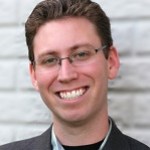Regenerative Medicine
The ‘Nifty Fifty (times 4)’, a program of Science Spark, presented by InfoComm International, are a group of 200 noted science and engineering professionals who will fan out across the Washington, D.C. area in the 2014-2015 school year to speak about their work and careers at various middle and high schools.
Meet Nifty Fifty Speaker Dr. Jennifer Elisseef
Each year in medicine the low availability of donor tissue and organs for transplantation grows even more acute, but scientists -- working in an emerging, high-tech frontier called tissue engineering -- are helping to address…
The ‘Nifty Fifty (times 4)’, a program of Science Spark, presented by InfoComm International, are a group of 200 noted science and engineering professionals who will fan out across the Washington, D.C. area in the 2014-2015 school year to speak about their work and careers at various middle and high schools.
Meet Nifty Fifty Speaker Dr. Jordan Green
As a researcher, Jordan Green, Ph.D. is on the front lines of creating innovative technologies and therapeutics that can directly benefit human health.
Specifically, this involves employing techniques in cellular engineering…
I was struck by this story on NPR about so-called "stem cell tourists." Stem cell tourists are parents taking their children to China for injections of stem cells in hopes of curing a wide variety of diseases. I want to convey at least in some small way what an insanely bad idea this is:
Jena Teague and her husband Terry Williams are among these new visitors. They traveled to China to seek stem-cell treatment for their blind, 7-month-old baby daughter, Laylah. She was born with optic nerve hypoplasia, or ONH -- when the optic nerves fail to develop properly in the womb. Conventional…
Scientists at the University of Minnesota have created new beating hearts in culture using a technique called decellularization:
Decellularization is the process of removing all of the cells from an organ -- in this case an animal cadaver heart -- leaving only the extracellular matrix, the framework between the cells, intact.
After successfully removing all of the cells from both rat and pig hearts, researchers injected them with a mixture of progenitor cells that came from neonatal or newborn rat hearts and placed the structure in a sterile setting in the lab to grow.
...
Researchers hope…

